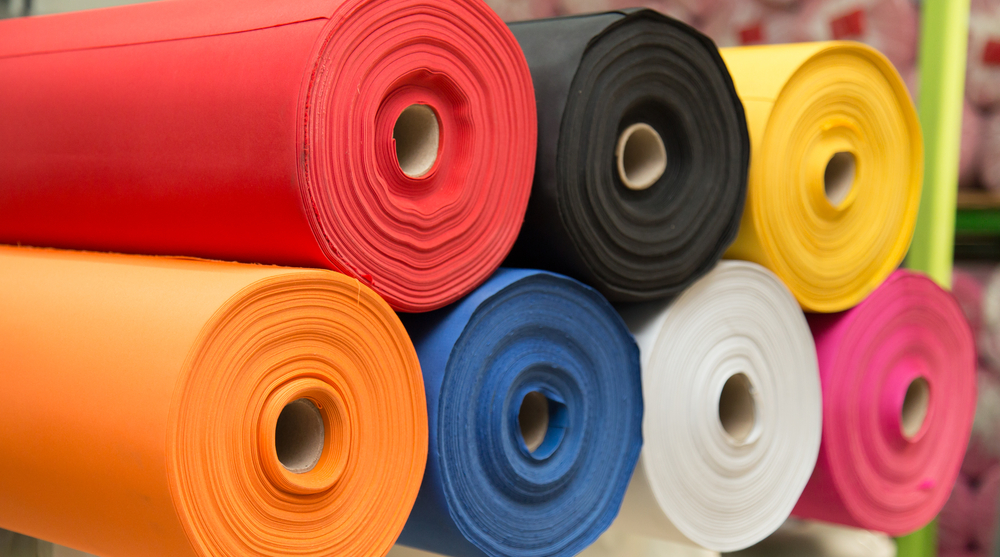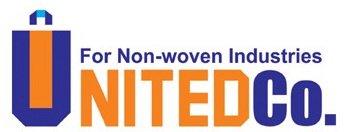Non-woven fabrics were produced in the 1940s from the twentieth century until the beginning of the fifties. Non-woven fabrics are produced in large quantities since tonnes are produced per day.

Medical fields:
Non-woven fabrics are used for the production of protective clothing, masks, sanitary napkins, medical napkins, doctors’ aprons and also for the production of enclosures.
In the field of clothing:
It has been used to produce epaulets for clothing, protective clothing, hats, sanitary napkins, children’s aprons, and also synthetic leather and shoes.
Field of Home Textile:
They are used to produce mattresses, curtains, mattresses, towels, mops, pillow-bags and synthetic felt.
In the industrial field:
It has been used for industrial purposes to produce car seat stuffing, food packaging, wallpaper, lining fabrics, decorative fabrics and also fabrics that are used as heat insulation and filters.
Non-woven fabrics are characterized by the property of threaded thread is a method that will convert the polymer into a cloth through a single process without performing the stages of spinning and fibers, where it is expelled molten polymer through the holes of precision and then enter the expansion phase as soon as cooled by the heat of air jets even Uniform diameter yarns are produced and then spread over a conveyor line. The yarns are distributed randomly in all directions as far as possible. The process is then repeated with other beams until we finally get a multi-layer product. It is a blending technique-between paper making and weaving technology. Layers together using pressure and heat.
Some types of non-woven fabrics:
• Mesh fabrics.• Fabrics and wild.• Casual fabrics.• Knitted fabrics (knitted), including a type that combines woven and knitted, including knitted fabric in a longitudinal and circular form.
What are non-woven fabrics?
It is a type of fabric described as bypassing the traditional plastic methods that depend on the principle of cross and long intersections according to specific specifications, it depends on the synthesis of synthetic fibers or natural hairs and is condensed in its random state without taking into account any balance between its elements and follow the method of pressure according to its purpose and the need to use it. These fabrics are known to have fabric formation.
Non-woven fabrics are categorized based on:
• Type of raw material.
• The final specifications of the product, especially the weight per square meter there are light, medium and heavy fabrics.
• Methods of manufacturing these fabrics.
• Technical division, which is usually based on ratios between tensile forces and capillaries.
• End-user used.
The methods for manufacturing non-woven fabrics vary to:
Chemical methods:
Fibers are impregnated with a liquid such as adhesives that are used in the lining of ships and aircraft. Fabrics produced by bonding fibers to heat treatments represent one of the chemical methods used in the production of chemically nonwoven fabrics. There are other methods such as dissolution.
Mechanical methods:
Of these (corset fabrics) of fabrics produced with loop fittings, (nets fabrics) of fabrics produced by the fittings of the contract, and there is also what is produced by stitches combinations through needles of filaments, yarns, and sintering.
Knitting method:
In this way insulating fabrics are produced that are used as insulating materials, this method is produced by sewing the yarns through sewing.
These types of fabrics are widely used in decoration.
Electronic and electrical methods:
The method of sewing wool: It is one of the old ways that follow the method of sewing the file by producing fabrics.
To be aware that non-woven fabric design of manufacturing lines depends on a special method for the treatment of filaments and a special way to connect the fibers and the number of stages there are some lines known for the manufacture of non-woven fabric such as:
(napkins) is a light wipes production line is represented in several stages (lightening – layoffs – special layoffs – water-binding – drying machine – iron – rolling machine) and then the product is subjected to longitudinal cutting and rewinding.
Insulation fabrics for the patients are the production stages in (lightening – laying – transverse placement – drawing – sewing machines – a second drawing machine – iron – rolling machine).
Synthetic leather: where manufacturing takes the basis of fabric production stage is represented (lightening – layoff – transverse placement – line drawing – condensing device – sewing machines – winding group).
Factories for the production of non-woven fabrics contain the preparation department (a place that includes a group of machines such as filter cleaning machine – hair whitening machine – cleaning machine – a special machine for lightening wool) and the section of laying and mixing section.
Non-woven fabrics are characterized by:
1- Low production costs.
2 – prolific production.
3 – widening the circle of use in many areas.
4- Distinguished characteristics that are not available in traditional fabrics.
5 – go through a few processes during the process of manufacture.
The production of non-woven fabrics goes through several stages, including the bonding phase in which the bristles are bonded with each other in two basic ways are mechanical bonding and bonding with air or water jet and there are other types of binding such as
• Thermal bonding is where the process of splitting the capillaries with special compressors thermally and often the use of thermal adhesive filaments in certain proportions.
• Joint interconnection The interconnection process is done in several ways.
The production of non-woven fabrics undergoes several stages:
• The stage of mixing and whitening of the hairs.
• The stage of the demobilization process.
• The stage of accidental placement.
• The stage of the linking process.
• The stage of the withdrawal process.
• Moxibustion stage.
• The stage of winding and cutting.
• The final stage of preparation, packaging, and re-shearing if required.
We can express non-woven fabric as an advanced stage for the production of fabrics, it improved the production stages and also shortened the stages of manufacturing and adopted a small use area of machinery and energy.
If you liked this article Share it with friends on Facebook, Twitter and contact us with any additions and waiting for your comments and questions with comments.
